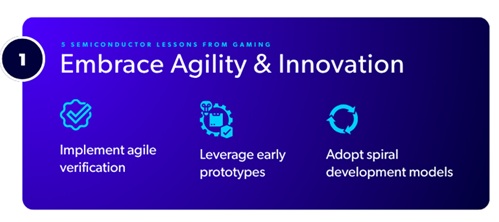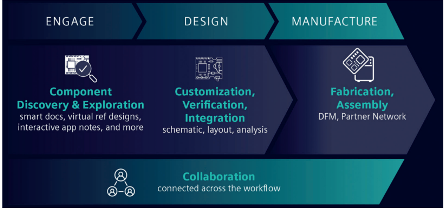As a professional conference goer I can see definite trends when it comes to topics and attendance. Thus far this year I have seen a double digit increase in attendance, which is great. The question is why? Why is the fabless semiconductor ecosystem leaving the safety of their cubicles and computer screens in droves to mingle amongst… Read More
 TSMC Kumamoto: Pioneering Japan's Semiconductor RevivalIn the lush landscapes of Kumamoto Prefecture, on…Read More
TSMC Kumamoto: Pioneering Japan's Semiconductor RevivalIn the lush landscapes of Kumamoto Prefecture, on…Read More Memory Matters: The State of Embedded NVM (eNVM) 2025Make a difference and take this short survey.…Read More
Memory Matters: The State of Embedded NVM (eNVM) 2025Make a difference and take this short survey.…Read More 5 Lessons the Semiconductor Industry Can Learn from GamingBy Kamal Khan The semiconductor world has always…Read More
5 Lessons the Semiconductor Industry Can Learn from GamingBy Kamal Khan The semiconductor world has always…Read More A Compelling Differentiator in OEM Product DesignJennifer, an OEM hardware designer, is planning a…Read More
A Compelling Differentiator in OEM Product DesignJennifer, an OEM hardware designer, is planning a…Read MoreTSMC Processes Galore
Today was TSMC’s 2015 North American Technology Symposium. They talked about a lot of things but perhaps the most important was that they gave a lot of details of new processes, new fabs, and volume ramps.… Read More
US is the Ultimate Leader in Semiconductor Business
Last year in November when I looked at the world’s top20 semiconductor companies with Samsungand TSMCbeing at the second and third rank respectively, first being Intel, I computed the sales numbers of the companies based on their countries and found that Taiwan and South Korea accounted for 34.5% of the total sales of the top20 … Read More
Breakfast was Fab: West Coast Wafers to Wall Street
SEMI describes themselves as “the global industry association serving the manufacturing supply chain for the micro- and nano-electronics industries.” That is a pretty broad remit. One of the things that they do as a neutral party is produce the World Fab Forecast. This is actually a bottom-up database that tracks fabs as they … Read More
How Pebble Reinitiated the Inning for Smartwatch
The effort for adding phone function into watch had started much earlier in 1999 when several tech companies joined the crusade to enter the big watch market. Notable among them were Samsung, IBM, Microsoft, Fossiland Sony Ericsson. The effort lasted for about a decade before showing its signs of fatigue. Microsoft SPOT (Smart… Read More
What is Inside of the Samsung Galaxy S6?
I’ve always been curious about what is inside an electronic device, and it was seeing the very first TI handheld calculator that got me started into a career as an Electrical Engineer. Next to Apple, the most popular brand in smart phone devices these days has got to be Samsung and they have just launched the Galaxy S6 device.… Read More
Security All Around in SoCs at DAC
Last month I was on my way to write a detailed article on important aspects to look at while designing an SoC. This was important in the new context of modern SoCs that go much beyond the traditional power, performance and area (PPA) requirements. I had about 12-13 parameters in my list that I couldn’t cover in one go, so I put the write-up… Read More
These Energy-Saving, Batteryless Chips Could Soon Power The Internet Of Things
Power consumption is always a major concern in the field of electronics, especially as the circuits controlling these electronics shrink in size while also growing in complexity. Utilizing a fairly new, ultra-low power technique known as a sub-threshold voltage mode for transistors operating in the circuit, the company named… Read More
The Changing Foundry Landscape: Trends and Challenges!
This will be a year of change for the fabless semiconductor ecosystem, absolutely. Last year we were wondering how Samsung Mobile was going to compete with the China clones and other low end smart phones. We now know the answer to that question thanks to the Chipworks tear down of the Galaxy S6. SemiWiki IP expert Dr. Eric Esteve blogged… Read More
Variation Alphabet Soup
On-chip variation (OCV) is a major issue in timing signoff, especially at low voltages or in 20/16/14nm processes. For example, the graph below shows a 20nm inverter. At 0.6V the inverter has a delay of 2 (nominalized) units. But due to on-chip variation this might be as low as 1.5 units or as high as 3 units, which is a difference from… Read More





AI RTL Generation versus AI RTL Verification